 [Abandoned Factory via Noctophotographer on Flickr]
[Abandoned Factory via Noctophotographer on Flickr]
Ever wonder what is inside that dark tunnel or deserted structure you pass on your way to work every day? There are a vast number of spooky and surreal abandoned buildings that populate even the densest countries, states and cities. Organized into helpful categories here are thirty must-bookmark resources for would-be urban explorers around the world. In addition to those listed below (right-click on the screenshots to jump), sites like DarkRoastedBlend and LookAtThis have entire categories dedicated to abandoned places and vehicles also worth exploring.
[Introduction to Urban Exploration - The Best Sites to Start With]

Opacity is a great place to start developing a taste for the allure of abandonments.
Tom Kirsch, the site’s creator and primary photographer, has traveled the world photographing deserted buildings. Some of the images are enhanced and retouched for effect and the results are very compelling. Not all of the locations are named to protect the integrity of the abandonments but for visual inspiration the site is unparalleled.

Infiltration is one of the oldest and most respected urban exploration websites around. The site’s founder has since passed away but back issues of their zine are still available for purchase as well as images and stories from past explorations and on-site forums. The site’s creator also wrote one of the definitive books on urban exploration - purchase at your own risk!

28 Days Later is definitely one of the most active urban exploration forums on the web and is focused mainly on British building infiltration. Explorations are divided into category by building type including tall structures, military installations, recreational facilities, underground sites and international (non-UK) sites. Many explorers upload stories as well as images of their adventures at various urban and rural locations.

UER is another very useful urbex forum that is structured somewhat differently from 28 Days Later. There is a single dedicated section for photography with other sections relating to tools and tutorials, new urban explorers, general urban exploration information and terms and locations related to urbex. Best of all: UER has threads based on geographical location to help people connect and share urbex info regionally.
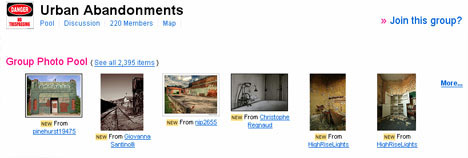
Flickr has many collectives dedicated to different kinds of abandonment imagery, including the above-linked Urban Abandonments group. The group consists of over 200 members and over 2,000 images and shows a broad range of photographic possibilities in color as well as black-and-white, retouched and shot as-is, that demonstrate the various approaches different explorers take to shooting their subjects.
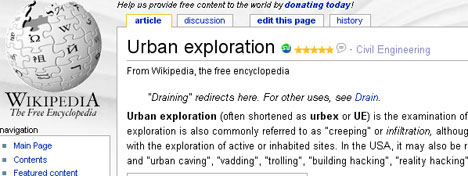
Wikipedia is of course a good place to start looking for information on many subjects but has a particularly well-rounded article on urban exploration. A number of useful books are listed as well as the appearances of abandonments in prominent films and television. Also included are links to related subjects like caving, parkour and ghost towns as well as various urbex categories like draining and exploring active buildings.
[Urban Exploration Websites Organized by Continent and Country]

Europe: Urban Travel has an incredibly well-organized database of their adventures in building infiltration and photography from all over mainland Europe at dozens of locations. You can browse by building type or country and dig back through years of archived images. This is definitely a site to visit and revisit. There is also a very active Flickr group dedicated to European Urban Exploration.

United Kingdom: Urbex UK has been featured in a number of national and international publications as an outstanding collection of urban explorations and building infiltrations that feature rich images, stories and other background information including maps and building plans.

Australia: Sleepy City is an ever-evolving collection of one man’s adventures in urban exploration around the world but in particular his encounters with interesting abandonments in his home country of Australia. His main focus is on buildings but he also covers abandoned cars, subways, sewers, bridges and more.
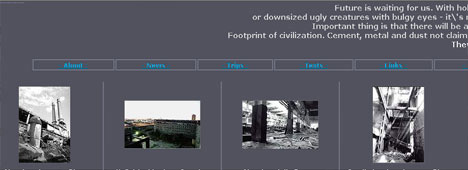
Russia: Abandoned dot RU features very raw, rough-and-ready images from various unfinished and abandoned building sites located around Russia. There is little attempt to glorify or even explain these ruins - viewers are given a full tour and it is at visitor discretion to assess the meaning of each location.
[Urban Exploration Websites Organized by State and City]

Pennsylvania: Forgotten Pennsylvania covers some of the most famous American abandonments, like the town of Centralia, as well as lesser-known deserted roads, towns and building complexes. The team of two is comprised of a storyteller and a photographer and is a very ‘real’ intro to PA abandonments a reader can relate to.

Ohio: Ohio Trespassers documents a variety of urban explorations in the Ohio region (a few dozen) in great detail accompanied by piecemeal histories of the sites being discussed. The emphasis is definitely on the stories rather than the locations but for anyone considering infiltrations in Ohio this is a good introductory guide.
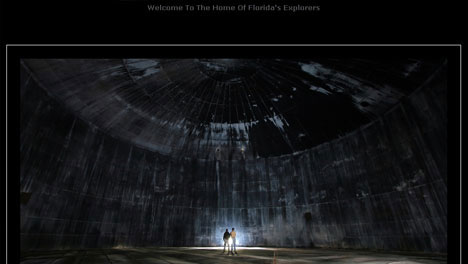
Florida: Flurbex is a Florida urbex forum unfortunately only accessible to members. Different people have differing philosophies on how publicly to discuss urban exploration and many err on the side of caution to prevent authorities from cracking down on urban explorers and/or to prevent locations from being overrun by ‘tourist’ visitors.

Indiana: Lost Indiana is a great resource of Indianan history focusing on abandoned or otherwise ‘quiet’ places like cemeteries. The site goes into great detail regarding the history and changes to specific sites including periodic status updates when locations are further demolished or otherwise altered.

Detroit: Forgotten Michigan focuses on the abandonments of Detroit - one of the most deserted major cities in the world. Detroit’s population has dropped by about a half over the last half-century and the result is, of course, a great many urban abandonments and sites dedicated to Detroit abandonments also including Detroit Ruins and Detroit Yes.

New York City: The LTV Squad is an intrepid team of New York City explorers who document everything from subway tunnels to abandoned military complexes in the greater NYC area. While they don’t feature very many sites the ones they do show the great variety of sites available even in a dense urban region.

London: Derelict London features a vast assortment of oddities around London not limited to deserted buildings. The site showcases waterways, cafes, shops, pools, murals and even has a section dedicated to toilets.
[Specialty Urbex Sites and Assorted Other Resources]

Legends of America focuses on a more specific period and region of abandonments: deserted buildings and ghost towns of the American West. There are some images to accompany the locations but best of all this provides a kind of road map for people who wish to explore this period of American history.

English Russia is a great website for non-Russian readers who seek abandonments and other Russian oddities translated into (albeit sometimes broken) English. The site has shipwrecks, auto yards, deserted buildings and other strange things from the former USSR with brief explanations and descriptions.

Dead Malls is, as the name suggests, a site that has collected pictures, links and information on abandoned malls all over the United States. Some of the histories are brief but many contain links to more info and images on other sites. This functions quite well as a ‘directory’ for this strange abandoned building type.
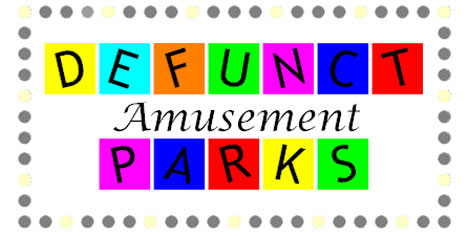
Defunct Parks is one of many sites dedicated to abandoned amusement parks of the United States. However, it is one of few sites that has information on a number of different parks around the country and goes into great detail including historical photographs and lists of rides the parks once had - a true encyclopedic database with arguably too much information at times but thorough for those who want to know.

Lost America features a hodge-podge of colorful photographs of everything from decommissioned military equipment and complex to roadside attractions and abandoned buildings. The common thread that runs through most of the images is the eerie artificially colored lights the photographer sets up on the sites.

Web Aperture has a solid introductory guide to photographing abandoned houses which is a good place to start if you want to take pictures of abandonments you plan to visit.
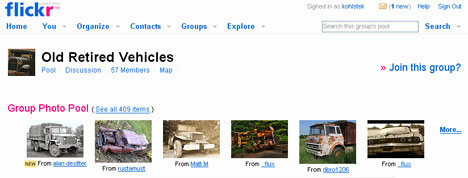
Old Retired Vehicles is yet another Flickr group dedicated to a particular kind of abandoned object. If that group catches your fancy you might want to also see the Old Cars group.
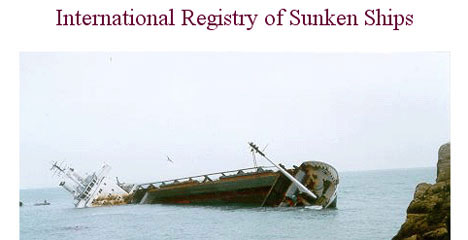
The International Registry of Sunken Ships is one of a number of sites dedicated to a very different set of abandoned objects. Though these sites are often old and not always extremely easy to navigate many of them, like Ocean Treasures, provide maps and information about shipwrecks around the world.
Original here

 (which launched last October), Revolution Health,
(which launched last October), Revolution Health, or Aetna’s SmartSource (via a partnership with Healthline).
or Aetna’s SmartSource (via a partnership with Healthline).




 “There is a total incompatibility between the joy of reading, a vagabond experience, and the experience of reading in order to answer questions, and explain what you understood.” - Rubem Alves, Brazilian educator.
“There is a total incompatibility between the joy of reading, a vagabond experience, and the experience of reading in order to answer questions, and explain what you understood.” - Rubem Alves, Brazilian educator.































